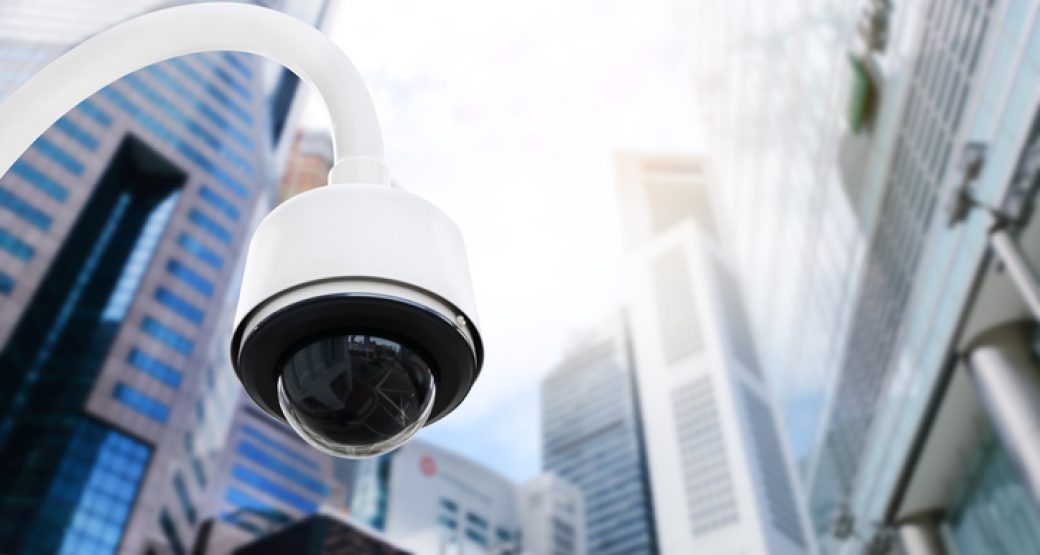In 2022, the United States Chamber of Commerce found that organized retail crime contributed significantly to $100 billion in retail losses. And shoplifting isn’t the only crime that commercial properties, government buildings, and even schools face on a regular basis. In that same year, 8 out of 10 retail businesses reported incidents of aggression. Elsewhere, 77% of public schools reported incidents of crime in the 2019/2020 school year. While these problems are complex and likely require multi-faceted solutions, physical security can offer a solid foundation from which to build a more holistic approach. This presents an interesting question. Namely, what are the layers of physical security and how do they contribute to greater safety for not only commercial properties but government buildings and schools as well?
What are the Layers of Physical Security?
Layer 1: Perimeter Security
The first layer of physical security, and the most basic, is perimeter security. Perimeter security involves measures taken to protect the outer boundaries of a facility, property, or premises. The goal is to create a secure barrier that prevents unauthorized access. At its most basic, perimeter security often makes use of fences and barriers to prevent physical access, as well as lighting as a deterrent.
Perimeter security also relies on other layers of physical security such as access control systems, surveillance, and intrusion detection to be effective.
Layer 2: Building Access Control
The aim of building access control systems is to ensure that only authorized individuals have access to designated areas, resources, or information. It involves mechanisms and systems designed to regulate and manage access to a facility or specific areas within it.
Some of the key components of building access control include electronic access systems (card readers, smart cards, or mobile access), biometric access control, keycard systems, visitor management, audit trails and monitoring, and integration with video surveillance.
Layer 3: Surveillance and Monitoring
In continuing to explore the question ‘what are the layers of physical security’, surveillance and monitoring make up the third protective shell. This layer makes use of more advanced technologies to observe and record activities in and around a facility for a more proactive approach.
High-resolution cameras are integral to surveillance and monitoring. Other essential elements include video analytics for threat detection, 24/7 monitoring, and remote viewing and management.
Layer 4: Intrusion Detection Systems
Next, intrusion detection systems make up the essential fourth layer of physical security. Businesses without an alarm system are 4.5x more likely to be targeted for burglary. Intrusion detection systems, or IDSs, focus on the identification of unauthorized access or security breaches. These systems are designed to detect and alert personnel to potential threats.
Some of the essential elements of IDSs include motion sensors, glass break detectors, audio detection (such as gun shot detection), and intrusion alarm systems.
Layer 5: Cybersecurity Measures
Today, the same things protected by physical security can be safeguarded digitally as well. On the flip side of that, the interconnected nature of security systems also exposes physical settings to cyber-based vulnerabilities. As a result, cybersecurity measures make up the fifth layer of physical security.
Cybersecurity systems can be extremely complex, but in general, most of them should include network segmentation, firewall protection, encryptions, data backups, and authentication and authorization.
Layer 6: Personnel Security
When considering the question ‘what are the layers of physical security’, the human factor should never be overlooked. That’s why personnel security is the sixth layer. Personnel security involves measures and protocols that are designed to monitor the actions of individuals within an organization.
Key components of this layer are employee background checks, training and awareness programs, access control, visitor management, and monitoring and surveillance.
Layer 7: Emergency Preparedness
Finally, emergency preparedness makes up the seventh layer of physical security. Emergency preparedness focuses on proactive planning and measures to respond effectively to various situations. These plans may vary drastically depending on the organization using them. However, in general, most emergency preparedness measures will include security alarms and notifications, evacuation plans, integration with public safety systems, crisis communication systems, and emergency response teams.
What are the Layers of Physical Security: A Brief Cost-Benefit Analysis
When deciding when and how much to invest in physical security for commercial, government, and school properties, it’s important to understand what goes into the costs and what the benefits are.
Purchasing and installing any layer of physical security requires an upfront investment. From there, additional costs may come from equipment, infrastructure, maintenance, personnel, and training programs.
However, the benefits of a robust physical security system can be extensive. Risk mitigation and a reduction in incidents are only the beginning. Physical security can also lead to better preservation of assets, business continuity, and insurance cost reductions.
Get the Best in Physical Security Services from ProTech Security
When it comes to safeguarding commercial properties, government buildings, and schools, the basics of physical security measures should not be overlooked. Physical security makes a huge impact on the protection of business assets and property, but it can also better protect the people who frequent those properties.
At ProTech Security, we offer comprehensive security solutions for businesses, government institutions, residences, and schools. Our physical security measures include integrated security systems, fire detection, gun shot detection, monitoring services, access control, video surveillance, and a list of other offerings.
With more than 40 years of experience, we’ve been trusted providers of custom security solutions for our customers in Northeast Ohio and Central Florida for decades. For security systems that cover all your bases, connect with our team today to get started.



